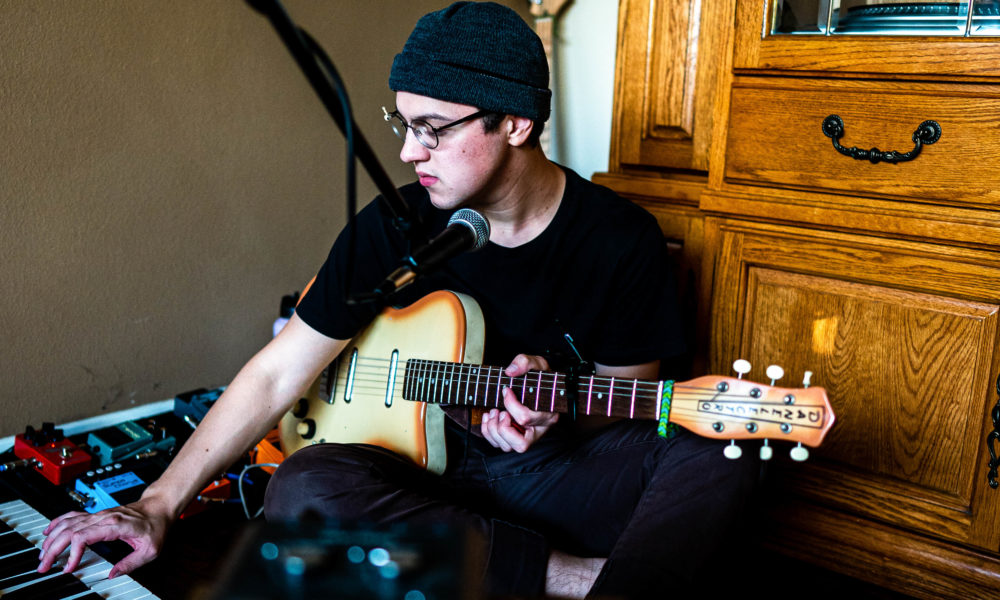Artists like Ryan de Hoop, fourth-year geography major, have been forced to find new creative outlets during the coronavirus pandemic.
As an alternative to meeting with his band, the Step Wife frontman begins his day by taking his freshly-brewed coffee outside to replay demos until he finds the vocal melody.
“I have been having way too much fun lately with sampling outdoor noises and turning them into percussive elements in my music,” de Hoop said. “Had going to campus still been part of the routine, I probably wouldn’t spend the small amount of free time I had in a day recording crows fighting across the street from my house.”
Due to state-mandated stay-at-home orders, creators are now faced with the task of creating without the essence of life influencing their art.
De Hoop was forced to cancel all Step Wife gigs due to concerns about COVID-19. Earlier this month Mayor Eric Garcetti announced that concert venues may remain closed until 2021.
Prior to statewide lockdown, Minh Hân Vu, a fifth-year architecture major, was on the installation circuit for performance art.
Serving as an anti-prison platform, #JAILBEDDROP was a performance art installation that Vu, along with movement artist Brianna Sims and project designer Georgina Grkikian, took across various galleries in Los Angeles.
Vu is one of many artists who’ve been forced to find another creative outlet.
Enlarge

Courtesy of Minh Hân Vu
“In the meantime, I have found myself with a lot of time to focus on more introspective art, it’s been a lot of painting and sketching,” Vu said. “I am looking forward to the days we can freely be outside, but the silver linings of this situation have brought me to take more time with myself as well.”
When he isn’t in a creative block, graphic designer Jordan Quick adopts Mickey Mouse as a modern interpretation of the world’s notion of iconicity. He came up with the idea to flip the mouse’s head upside down, which he said resembles what the world feels like today.
“It’s given me all the free time to create with no time restrictions, but the con is I get a lot of my inspiration from everyday life,” Quick said. “Being stuck inside has left me falling into blocks often.”
Enlarge

Courtesy of Jordan Quick
Singer-songwriter Fabian Cerros is a musician whose work ethic has also been upended by the lockdown.
Although his inspiration has come and gone during the lockdown, Cerros said he’s adapting to the solitude within the four walls that surround him. He’s also coping with “the good and the bad” of life that he believes creates him, but with the help of music.
“I owe nature so much. I owe this chaotic society so much. It’s the yin and yang,” Cerros said. “When I have a guitar in my hands, I’m given the world.”
Historically, much of the progressive art during a time of national crisis is a reflection of horror the creator witnessed, like Caspar Luyken’s sketch “The Plague of Naples, 1656 Italy,” Virginia Woolf’s “Being Ill” and, famously, Shakespeare’s “King Lear” and “Othello.”
De Hoop and Cerros said that more artists taking an introspective approach to their work warrants the question of an artistic renaissance during this period of quarantine.
Vu said that a modern renaissance will take more than just the artists themselves changing their method of creation.
“There is hope in the position this virus has left us in; we are poised to question minimum wages, access to health care, and the lack of value we grant to people in the working class,” Vu said. “If we want a renaissance, we must first have the tools to support the life that creates it.”




